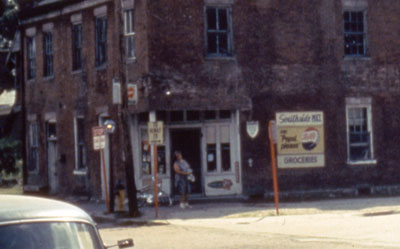
Southside Market, 1001 South Main, collection of Archie Scott, St. Charles County Historical Society
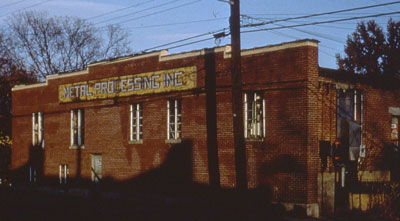
Metal Processing Plant, 921 South Main, collection of Archie Scott, St. Charles County Historical Society
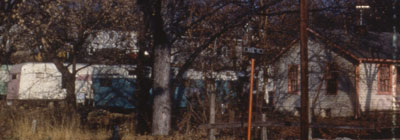
Trailer Court, 915 South Main, collection of Archie Scott, St. Charles County Historical Society
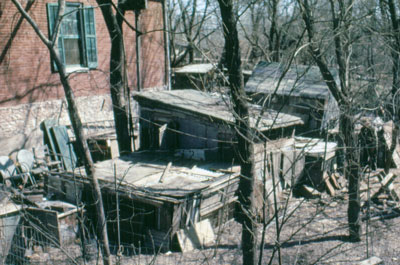
"Chicken Lady's House", 912 South Main, Jean Baggerman collection, St. Charles County Historical Society
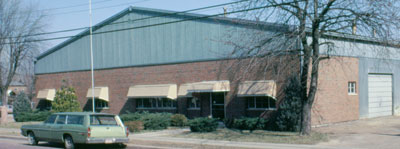
City Garage ca. 1970, 800 block South Main, collection of Jean Baggerman, St. Charles County Historical Society
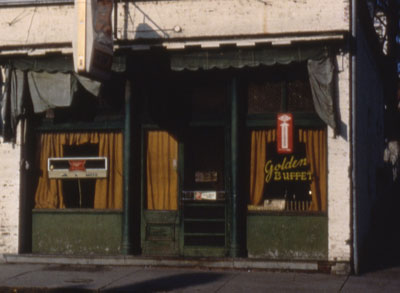
Golden Buffet, 501 South Main, Archie Scott Collection, St. Charles County Historical Society
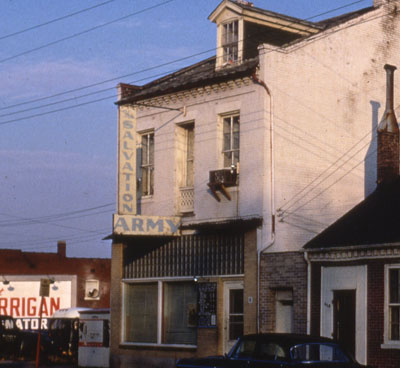
Salvation Army, 416 South Main, collection of Archie Scott, St. Charles County Historical Society
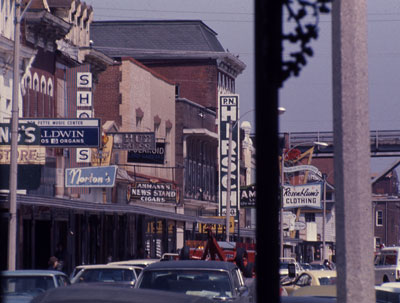
Downtown street scene, Archie Scott collection, St. Charles County Historical Society
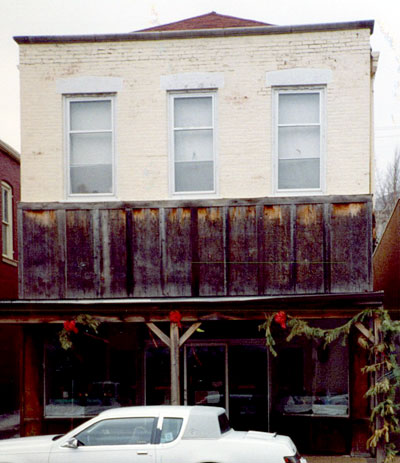
115 North Main
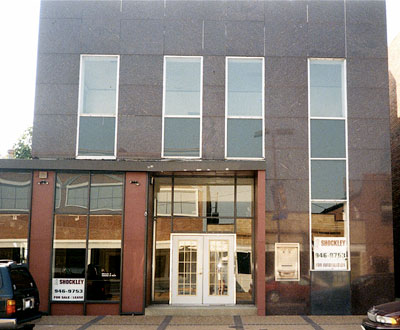
123 North Main
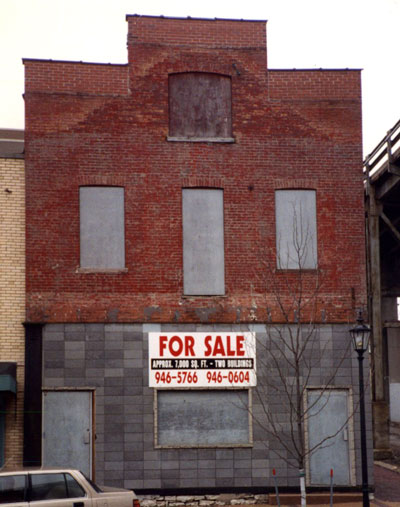
343 North Main
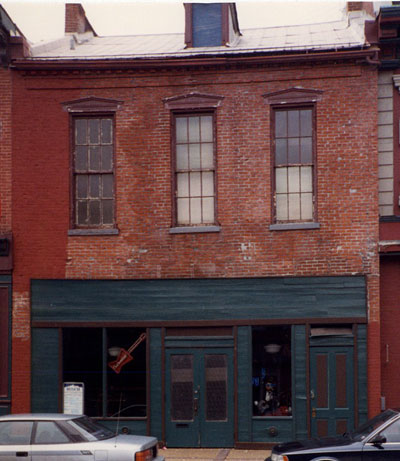
215 North Main
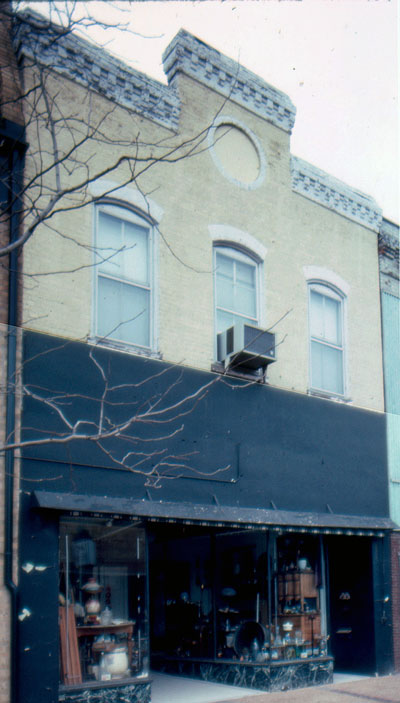
319 North Main
|
A STROLL ON MAIN STREET
Imagine it is 1966. You are strolling Main Street in St. Charles beginning at the corner of South Main and 'Booneslick Road' (the colloquial version of the street name used at the time). A train can be heard, blowing its whistle as it rumbles down the track. The South Side Market is open and kids are buying penny candy after school. As you survey the view from the corner market, there is a shabby trailer court on the northwest corner, a dilapidated metal processing plant on the northeast corner, and a battered two story brick building to the southeast. A few local alcoholics stumble past as you continue your journey on Main Street.
If you were to walk south, you would find a fenced property with large oil tanks and a lighted Mobil winged horse sign outside an irregular-cut stone building, and further on, a well-known winery.
The old brick street is patched with asphalt, the sidewalks are a mix of dirt paths, brick and portions of uneven concrete. In the 900 block, you notice a small one story building next to the creek, the yard stacked full of chicken coops. Later, you are told this residence is called “Chicken Lady’s House”.
Though ramshackled, most of the buildings are free of remodeling that would hide the original form. If you were a person of imagination, like Archie Scott, you could see the forms as they had been intended when built a in the early to mid 19th century, hear the beating of horses hooves and the rattle of wagons.
In the 800 block, the city has a large property and industrial building used by the street department, piles of sand and gravel, parked trucks.
A few antique dealers are doing business in the antique buildings, though most keep irregular hours. In the 500 block, the Golden Buffet, opens its doors at 6am to accommodate those who need a drink at that hour; dart ball tournaments are a popular pastime at this local tavern. Behind the Main Street buildings, on the river side, is a messy array of sheds, oil tanks and a crumbling train depot. The view of the river is obscured by the dense vegetation.
In the 400 block, you find the Salvation Army and a heating and air conditioning business. Though all of the buildings are rough in appearance, you notice the newly installed gas lights. Another popular tavern, City Club, is operating at the corner of South Main and First Capitol Drive, a printing company occupies the building on the southwest corner, a paint store is located just off the northwest corner.
A recently renovated First State Capitol building is proudly standing in the 200 block. As you pass by the Capitol building, a change is noticed. The buildings become larger and most date from the late 19th century. A myriad of commercial signs hang from the facades of stores and banks. The quiet of South Main becomes a bustle of cars and shoppers in the North Main downtown, terminating at the complex of American Car and Foundry warehouses.
A few visionaries could see past the neglect and crumble of South Main in the 60’s; others came because they loved the patina of age. For some, it became a love affair with the old architecture and the history of the place. The early preservationists struggled to work a day job and restore their buildings nights and weekends as they adapted the historic architecture for new uses. Their efforts were supported by new legislation that protected the original architecture and character of the district. Restoration work on North Main began in earnest in the 80’s and today, many beautifully restored buildings on North and South Main are the pride of the community.
Extensive protections exist in the Historic District zoning designation, the listing on the National Register of Historic Places, the establishment of a Landmarks Board, the adoption of the Architectural Design Guidelines for the South Main Street Historic District.
PRESERVATION TODAY
The work of preservation continues today. Developers who would eschew the hard-won Historic District protections covet infill opportunities. Property owners more recent to the process, sometimes lack the understanding of the larger context. City officials sometimes set aside Historic District protections for commercial interests.
Recent issues have included a proposed high rise condo development in the South Main Historic District and the overturning of a Landmarks Board decision involving restaurant venting equipment on the roof of a historic building.
Although our historic districts on North and South Main are relatively mature, vigilance is required to preserve and protect these fragile historic assets.
|

